In Prague, where there used to be an industrial complex dating back to 1901, Leoš Válka and Robert Aafjes had the incredible dream a few years ago of giving rise to DOX Centre for Contemporary Art. Since the capital to be able to carry out this project was insufficient, the two partners involved other financial supporters: Václav Dejčmar, Libor Winkler and Karel Janeček, who are currently considered among the major patrons of contemporary art in the Czech Republic. In this way, based solely on private initiative, the DOX multifunctional space saw the light in 2008 as a non-governmental and non-profit reality.

External view of DOX: in evidence the so-called Gulliver Airship, signed by Peter Cook and Colin Fournier. Photo Jan Slavik, © DOX, Praga
The available space exceeds 3 thousand square meters, and the renovation project was signed by the architect Ivan Kroupa. Then, in 2016, from a collaboration between Leoš Válka and the architect Martin Rajniš, there was the addition of a kind of “zeppelin” called “Gulliver Airship”, signed by Peter Cook and Colin Fournier, which actually seems to evoke futuristic architecture of the Kunsthaus in Graz. The current programming of this cultural center intersects visual art, literature, theatre, cinema and music, in an attempt to offer a unique model of permanent education: a real exchange of ideas and contributions to the suspension of our habitual way of looking at reality. The name of this center derives from the Greek word doxa which in classical philosophy was used to designate the lower degree of knowledge, based on the senses, and dialectically opposed to the stage of absolute truth (epistḗmē). For this reason we can think of DOX as a center that springs from below, connecting to the moods of our time and to the thinking of ordinary people. In this way DOX binds to the contingent and not to an eschatological vision of things, to become an art center in the most pragmatic sense of the word.

View of Andres Serrano’s “Infamous Beauty” exhibition at DOX in Prague. Ph. Jan Slavík, © DOX, Praga
On the wave of the spirit where dialectics and contradictions can well be highlighted, DOX, signed by Otto M. Urban, offers, until January 7 2024, an incredible exhibition by Andres Serrano (New York, 1950, lives in New York), one of the most discussed and controversial photographers of our time. It is a chronological journey developed with more than 120 photographs starting from the 1980s (Body Fluids, 1986-1990; Immersions, 1987-1990; Nomads, 1990; Clan, 1990; Morgue, 1992; Objects of Desire, 1992; America, 2001-2004; Holy Works, 2011; Torture, 2015; Made in China, 2017; up to the most recent cycle, Robots, 2022). In addition, the Infamous series (2019), which offers the verse to the title of the exhibition, is presented on the mezzanine.
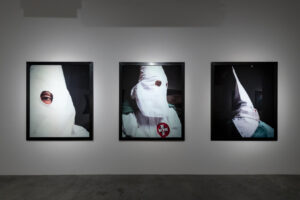
Vista parziale della mostra “Infamous Beauty” di Andres Serrano al DOX di Praga. Ph. Jan Slavík, © DOX, Praga
When he arrived in Italy for the first time, within the sensational group show presented at the Castello di Rivoli (The gaze of Medusa, 5 July – 27 September 1991, curated by Ida Giannelli), Serrano had already gained a certain notoriety given that the right-thinking public had had the opportunity to be scandalized by the presentation in public spaces of his first photographic cycles (The Unknown Christ, Museum of Contemporary Hispanic Art, New York, 1986; The Seibu Museum of Art, Tokyo, 1990; Nomads, Denver Museum of Art, and Saatchi Museum, London, 1991; in addition to the exhibition on the theme of death exhibited by Paula Cooper, New York, 1993, with The Morgue cycle). So, in 1991, the author had already caused a scandal for the topics covered, without any hesitation. However, all in an impeccable manner, with poses that recalled Richard Avedon’s greatness, so much so that questions and doubts arose as to how and where his work should be placed. But the small world of photography (that somewhat traditional world of “photographic-photographic” criticism which still found it difficult to accept, within a correct theoretical horizon, the work of authors of the stature Gilbert & George who used the camera not only to produce “images” but above all to express an inner world and the greatness of being poets even by means of a photographic pose) still had serious doubts. In short, the judgment was suspended, since it seemed unthinkable that some authors could be so famous (and expensive), while others like Mario Cresci and Bernd & Hilla Becher, who had also been incorporated into the world of “photography-photography”, could not yet fully valued or not valued adequately.
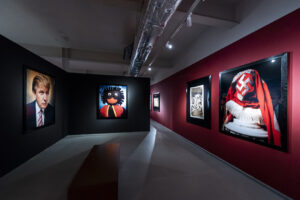
Vista parziale della mostra “Infamous Beauty” di Andres Serrano al DOX di Praga. Ph. Jan Slavík, © DOX, Praga
Serrano’s rising star therefore made one think and raised doubts. However, these doubts vanished when the author, speaking with the public in Rivoli, dwelt not on the “scandalous” subjects that characterized his thematic cycles, but on the 50mm lenses, the films, the framing, the light, on all those aspects and details that were held in great consideration by those who considered themselves photography technicians and always had the suspicion that the various extra photographic flexions could produce improper uses. Of course, this way of seeing, from a truly historical point of view, makes us smile a little, given that we had well witnessed that set of confused words that the historical avant-gardes had produced, from photography in the Bauhaus style to Man Ray’s x-rays. Without wanting to dwell on the clouds photographed by Stieglitz. Clouds? But can they really be considered a plausible photographic subject? So even Native Americans or the homeless can be considered plausible photographic subjects, and there is nothing more to add.
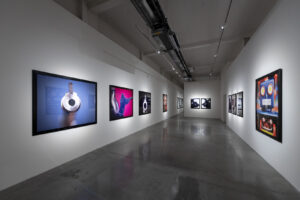
Vista parziale della mostra “Infamous Beauty” di Andres Serrano al DOX di Praga. Ph. Jan Slavík, © DOX, Praga
However, in the end everyone had to agree that Andres Serrano is a great author. This is why his work should not be seen only for the subjects treated and for the repulsion that some of these can give (from portraits of Native Americans to the followers of the Ku Klux Klan, from religious themes to the celebration of the American nation), but above all for the formal aspect that characterizes every single shot, for the impeccable framing and for the perfection that characterizes all his work, always based on great planning and never on post-production. Of course, we can certainly say that this sequence of works is not in line with the diktat of the politically correct, but we can also shout it out loud: fortunately!
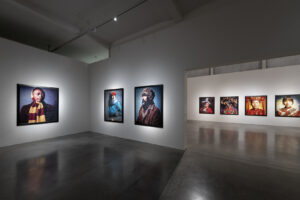
Vista parziale della mostra “Infamous Beauty” di Andres Serrano al DOX di Praga. Ph. Jan Slavík, © DOX, Praga
We conclude this brief presentation with a statement by Serrano that helps us better understand his position towards photography, although this too should not be read as further irreverence, but only as a broadening of the gaze to three hundred and sixty degrees: «I’ve never called myself a photographer. I studied painting and sculpture and see myself as an artist with a camera. I learned everything I know about art from Marcel Duchamp who taught me that anything, including a photograph, could be a work of art». Which, if we want to interpret it correctly, means this: the technique is always subject to the image, and every image belongs to the art history. Another way to say: Andres Serrano belongs to the inner circle of Olympic gold.
Info:
Andres Serrano, Infamous Beauty
curated by Otto M. Urban
8/07/2023 – 7/01/2024
DOX Centre for Contemporary Art
Poupětova 1, Praha 7
infocentrum@dox.cz
dox.cz
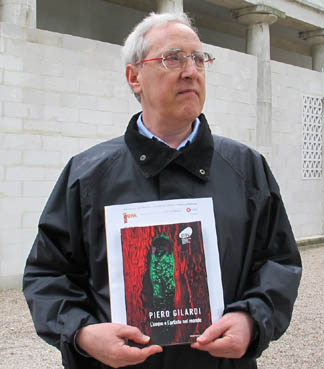
He is editorial director of Juliet art magazine.



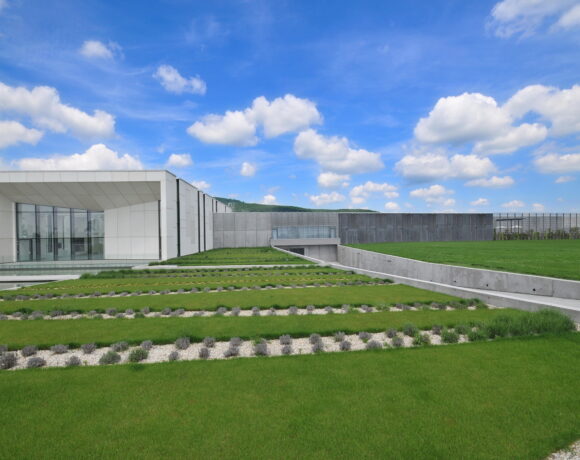


NO COMMENT